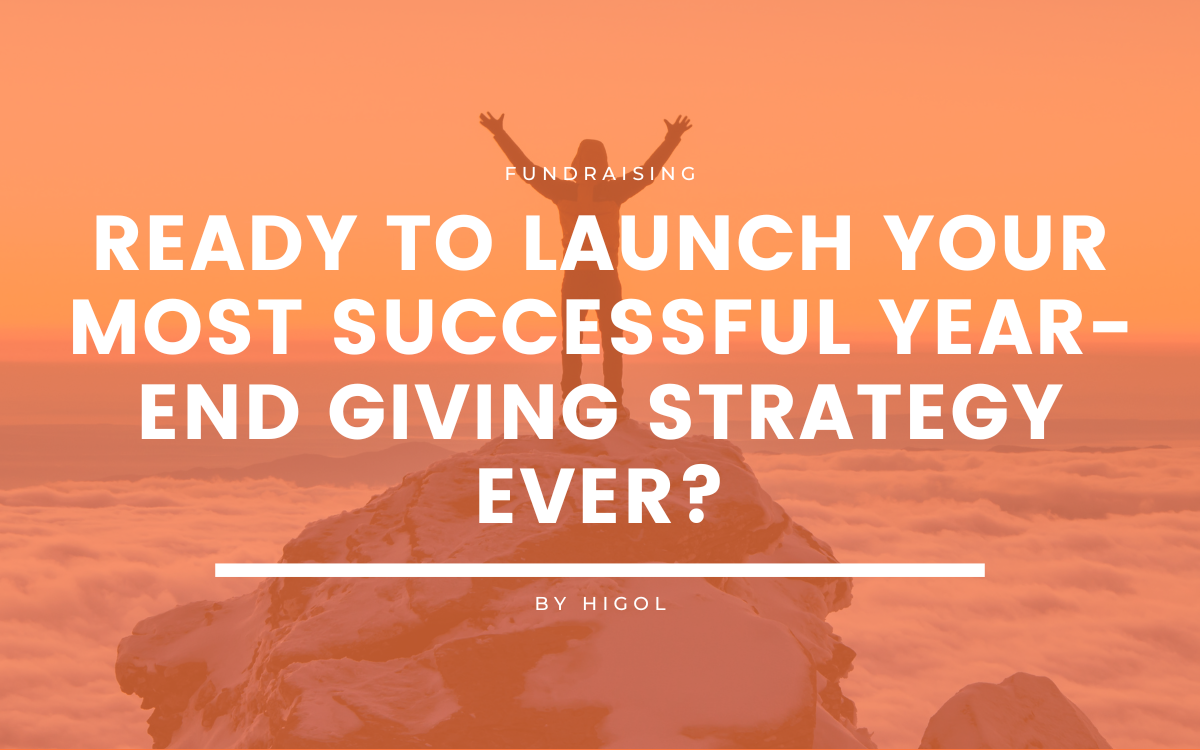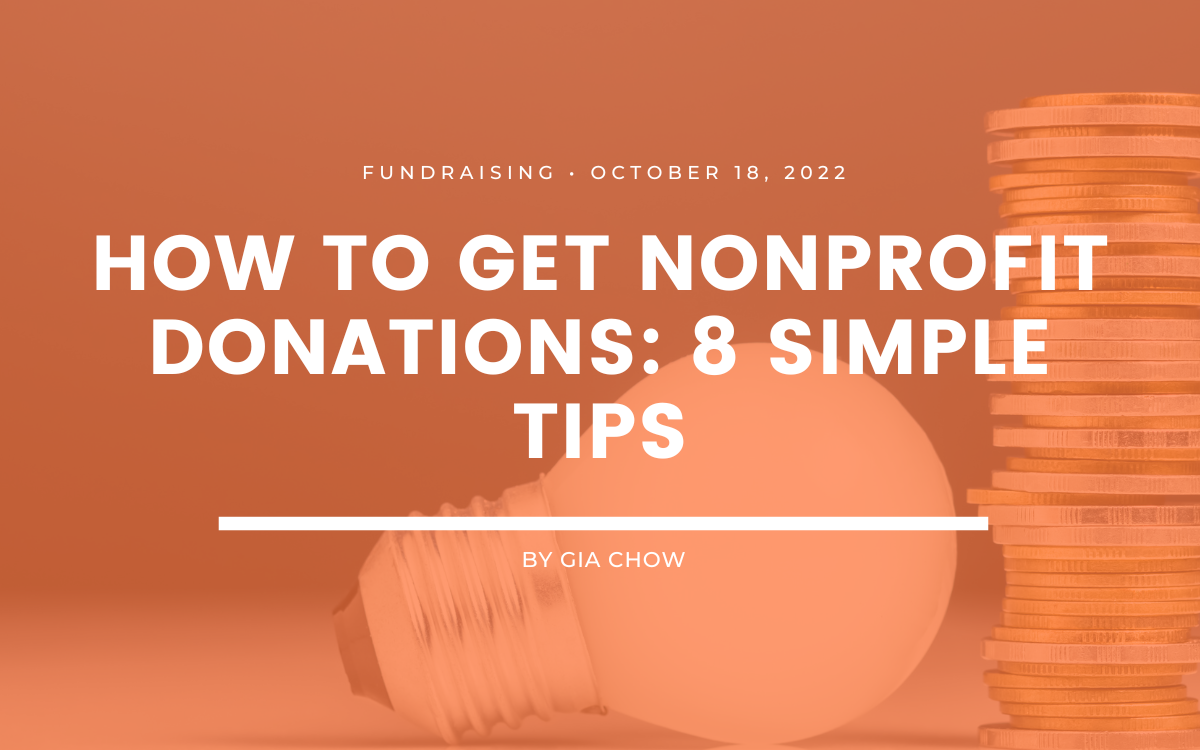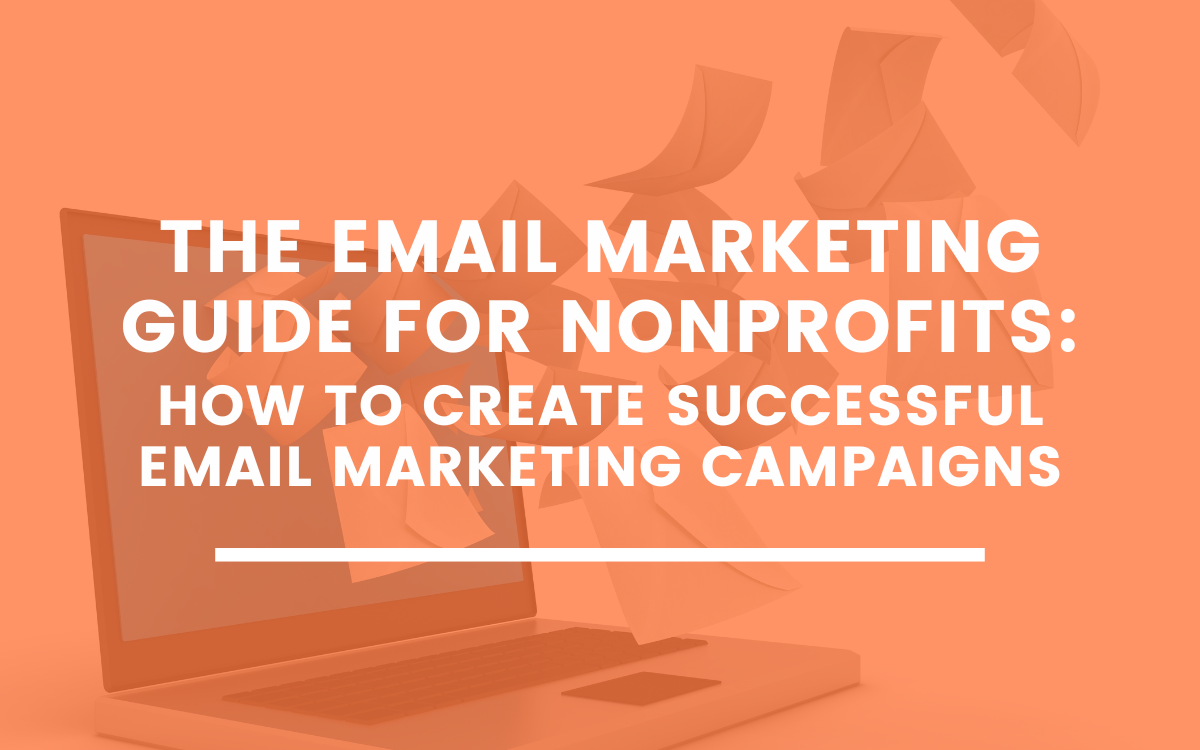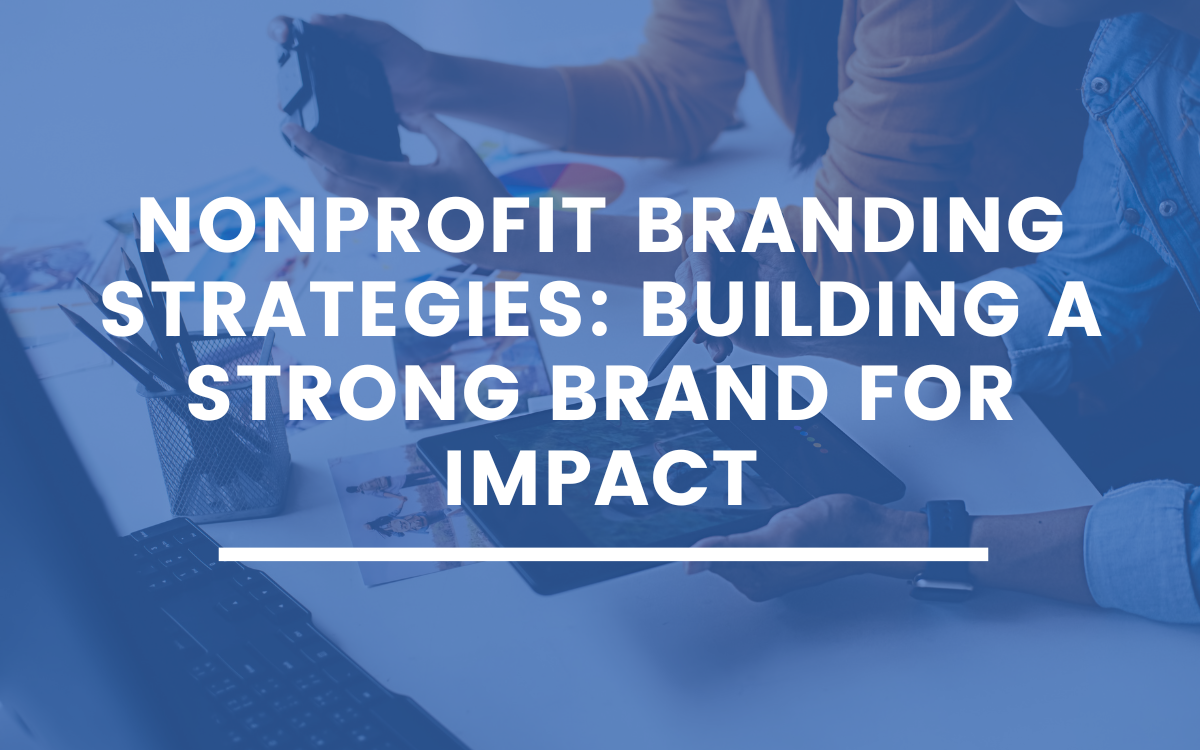Launch Your Most Successful Year-End Giving Strategy Ever
min to read ✭
September could not be a better month to begin planning your year-end giving strategy. Yes, the time is now. In August, I attended Community Boost’s Online Radical Impact Conference. It was so good!
After listening to development teams from across the U.S. share their experiences with year-end giving strategy as well as the folks at Giving Tuesday (GT) (the organization that tracks GT metrics and has TONS of templates and tips to help you effectively participate), I have some gold to share.
Embrace the Year-End Giving Cycle
A ‘best’ practice is to see year end giving not just as a Giving Tuesday request, or a year-end letter, or year-end event, but as an ‘end of year giving cycle’. You need a thoughtful, well planned year-end giving strategy to be successful in that cycle.
Every organization and their donor base is a little different, so I am going to generalize. Please take this and adapt it for your own purposes. My main goal is to get you excited about raising more money this year.
The ‘cycle’ ideally begins in October. Nonprofits should start conveying their story and educating donors about the impact achieved thus far, ongoing critical needs, the nonprofit’s goals for the next year, and how donors can contribute. Crystal-clear storytelling and showcasing your organization’s impact are pivotal to a successful year-end giving strategy.
Video and testimonials can be powerful for this. For those in need of high-quality graphics support for email and social media, here’s a resource to explore. Consider sending two to three emails in October and sharing this on your social media platforms.
Early November presents and excellent opportunity to thank your existing donors while preparing for Giving Tuesday.
Note: Some folks are using Giving Tuesday as “gratitude Tuesday” by exclusively thanking their past donors at this point. This approach acknowledges the challenge of breaking through the “noise” of Giving Tuesday to attract new donors, particularly for those with a limited donor base.
However, I encourage experimentation. If you haven’t explicitly asked for donations on Giving Tuesday before, give it a try and assess the results. If GT has been a bust for you, carefully evaluate how you can change your approach. The rest of this post will provide creative ideas, and Giving Tuesday has lots of free tools to get you started.
In your campaign, Giving Tuesday can be the first time you make the ask, after having ‘warmed up’ your audience in October.
Three Things to Do When Making the Ask:
These things take planning! Start now.
1. Set Clear Goals
Data shows that organizations who set an end of year financial goal (vs just a general appeal) do better than those who do not. Set your goal by the end of September to serve as the foundation for your campaign.
2. Leverage Matching Donors
Organizations who arrange for a donor to provide a match on Giving Tuesday (and for your year-end giving strategy and campaign generally) get better response rates than those who do not. Donors love knowing their funds will be leveraged! Get this in place in October.
3. Transparent and Consistent Communication
While email is effective, consider incorporating direct mail, social media, well-placed digital ads, and even texting into your strategy, although these are not mandatory for success.
In November, inform your audience about the specific amount you need to raise and how every donation will be matched, acknowledging and thanking the matching donor, if they desire recognition.
Language can be something like… Giving Tuesday is a chance for all of us to come together and make a big impact because getting us to our goal of $xxx, together we can accomplish yyy in the coming year. We are so excited this year we are able to further leverage your gift with a matching donation from… We invite you to be part of work or movement. Can you help us? Every donation counts.
Continue communicating in December, sharing your progress and expressing gratitude for contributions. If you’ve met your goal, inspire donors by illustrating how additional funds can lead to even more impact.
The Two Most Generous Days of the Year
In the U.S., the most philanthropic funds are raised during the last two days of the year.
Therefore, maintaining communication with donors and prospects through the very end of the year is crucial.
January is about appreciation for all the giving! Now it the time to share stories about the impact you intend to create e and express appreciation for their journey with you.
Where to Start With Year-End Giving
Before you do anything, start by carefully looking at your own data. Don’t go by the seat of your pants.
Open up your CRM, crunch some numbers, and create some reports that will help you make the case for this campaign and make better decisions.
Look for things like:
- When have people given the most in the past in the last two months of the year?
- What campaigns/emails/direct mail have been most successful (i.e. highest open rates, highest giving rates?)
- Who are your major donors and when do they typically give?
- Do you have lapsed end-of-year donors you could reach out to in a special way?
- Do you have monthly donors you could make a special kind of appeal to – acknowledging their loyalty and asking for a special year end gift to meet your goal?
- Do you have a lot of year end donors you would like to make monthly or recurring donors? Here are some simple ways to do that.
- What is going on in your environment you want to respond to now in your appeal?
From there, build a year end giving strategy, involving your CEO, Executive Director, Finance Director, Resource Development Director, and Board of Directors. For optimal results, you need to be a true team.
One thing is clear, the more you ask your donors, the higher the chances are that they will give. We know, however, some board members in particular, don’t like to ask. So, here are 12 ways the board members can help with a year-end giving strategy without asking anyone for money.
Get Creative!
I’m sharing this to stimulate your creativity. Adapt these ideas to your unique circumstances and don’t shy away from experimentation. I would love to hear what you’re thinking for this year and what has worked in the past. That way we all learn together.
For additional inspiration and the opportunity to earn CFRE points at a discounted rate, consider exploring the recorded sessions of the Community Boost Radical Impact Conference available for purchase [here].





